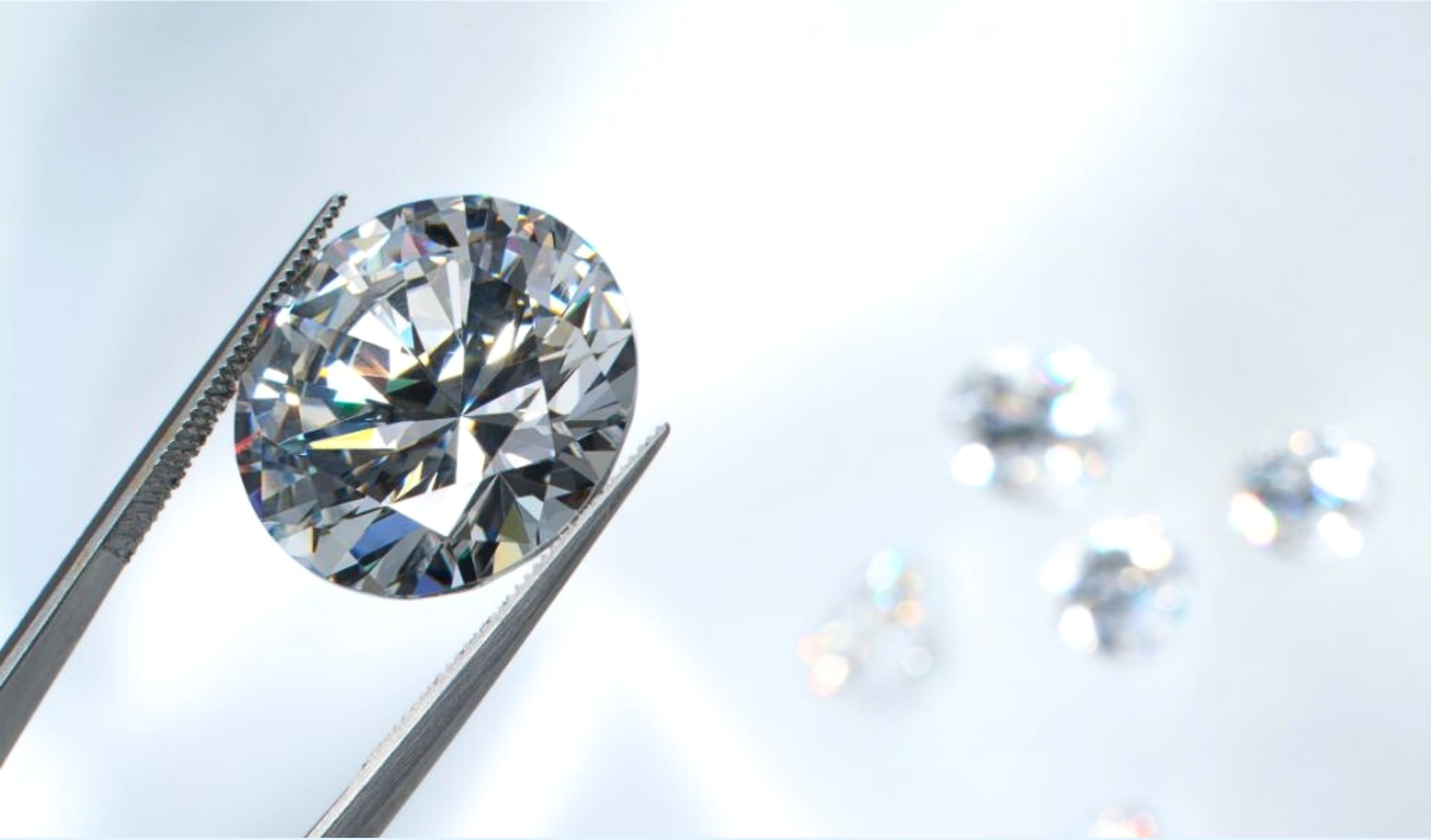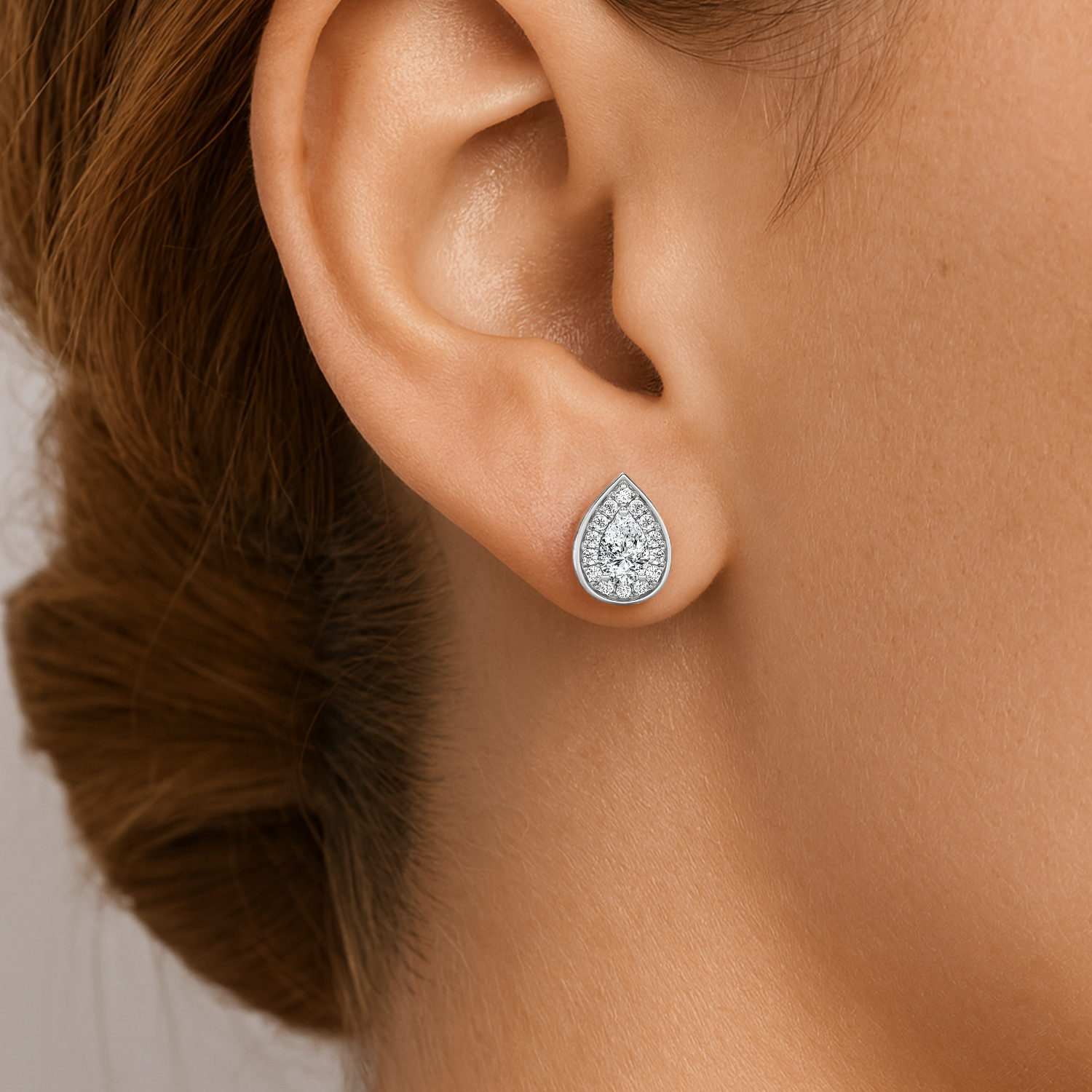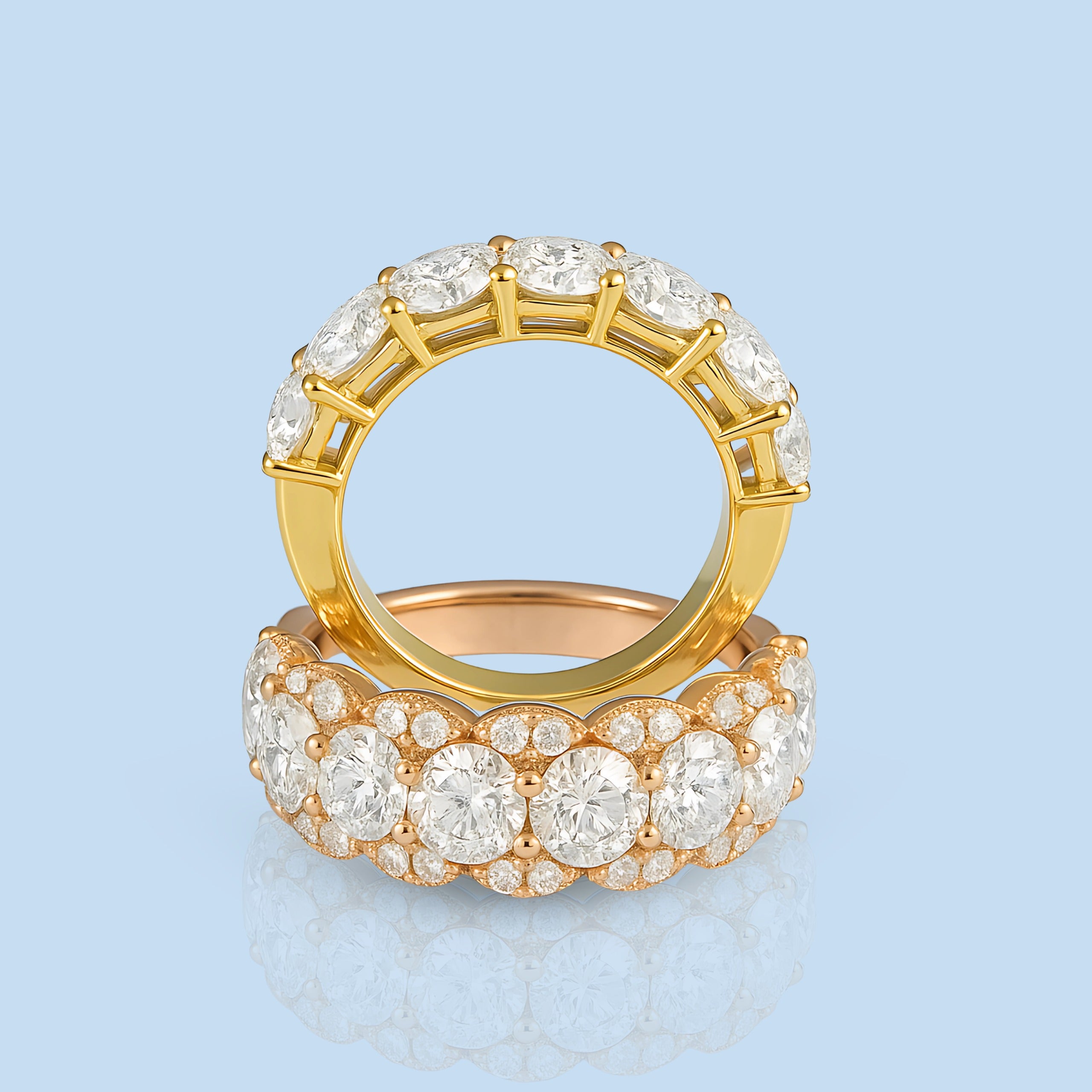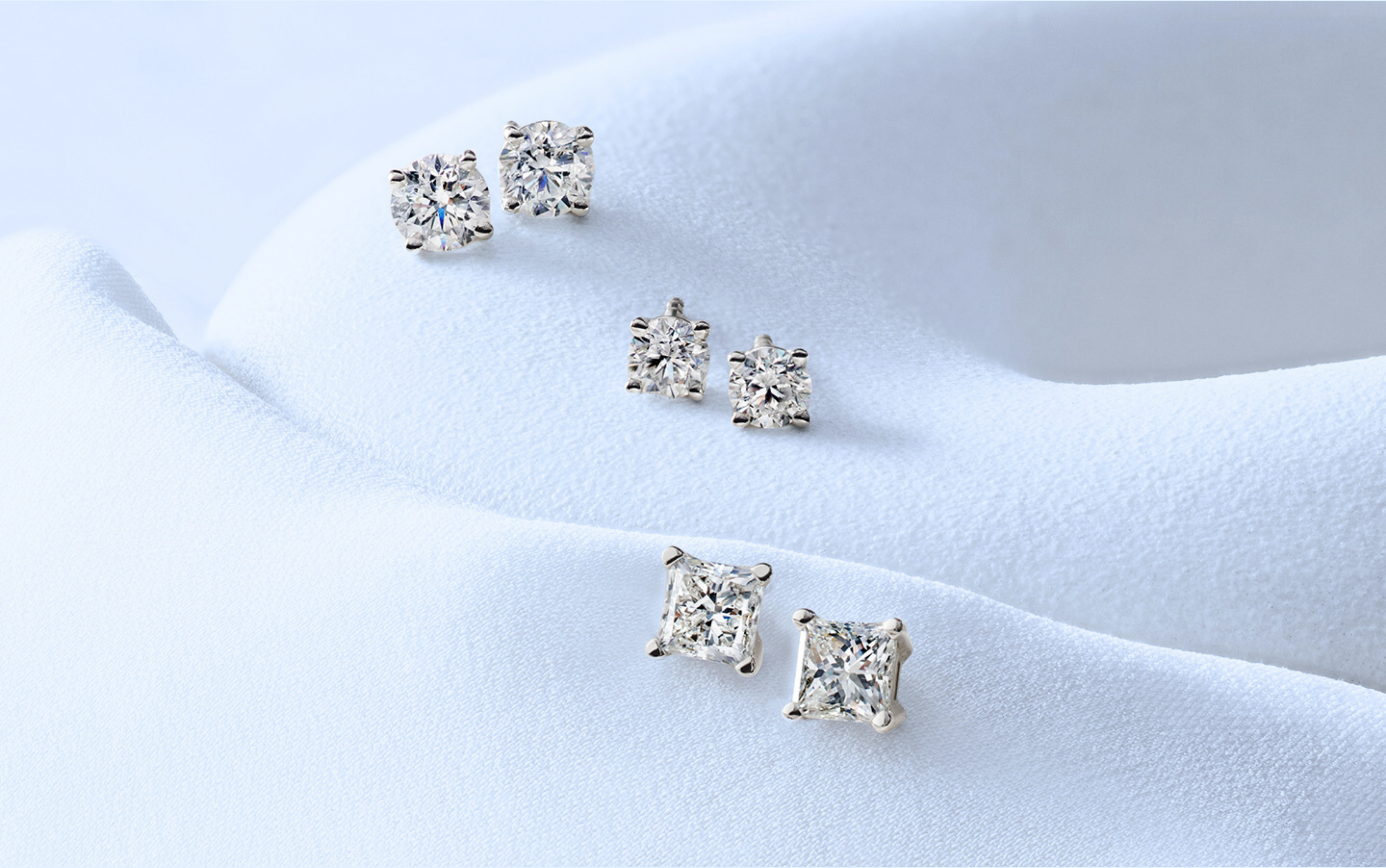Article: Top 3 Reasons to Choose a Certified Lab-grown Diamond Stone

Top 3 Reasons to Choose a Certified Lab-grown Diamond Stone
The charm of lab-grown diamond stones with certification has fascinated the diamond industry by providing sustainable and equally beautiful alternatives to mined diamonds. As consumer awareness surrounding ethical jewelry continues to grow, interest in lab-grown diamond stones has rapidly increased.
Lab-grown diamond stones are created through a sophisticated technological process that attempts to minimize the environmental impact while also providing consumers with a more affordable option without sacrificing the beauty and quality of a mined diamond.
There are many advantages to opting for a sustainable diamond, ranging from environmental advantages to economic considerations, that will be discussed further and in detail in the upcoming sections.
The Brilliant World of Certified Diamonds

The attractiveness of certified lab-grown diamonds is based on a few elements, notably quality, ethics, and sustainability. As the diamond industry changes, it is important to understand the science and certification of lab-grown diamonds.
The Science Behind Lab-Grown Diamonds
Lab-grown diamonds are produced using advanced scientific technology. This process replicates the conditions for diamond formation. Diamonds are cultivated using HPHT or CVD methods. These controlled conditions result in identical diamonds. They are chemically, optically, and physically the same as mined diamonds.
Understanding Diamond Certification
Diamond certification is an integral part of a diamond's quality and authenticity. It provides a detailed account of the diamond's carat, color, clarity, and cut.
What Certification Tells You
Certification tells you the diamond's 4 C's: carat, color, clarity, and cut, while also confirming the diamond's authenticity and conflict-free status.
Major Certification Bodies
Major certification bodies for diamonds include the Gemological Institute of America (GIA) and the International Gemological Institute (IGI). These organizations have an impartial process of issuing a diamond’s quality and characteristics.
|
Certification Body |
Focus |
Recognition |
|
Gemological Institute of America (GIA) |
Diamond grading and identification |
Globally recognized |
|
International Gemological Institute (IGI) |
Diamond grading, identification, and colored gemstones |
Globally recognized |
Reason 1: Ethical Sourcing and Conflict-Free Guarantee
Ethical sourcing and conflict-free diamonds are highly notable reasons to choose certified lab-grown diamonds. Unlike regular diamonds, lab-grown diamonds are developed in controlled settings, which reduces the risk of human rights violations that have become increasingly associated with diamonds mined from the earth.
Eliminating Human Rights Concerns
Diamonds manufactured in a lab completely remove the human rights concerns of diamonds that come from mining. The Kimberley Process was developed as a means of preventing conflict diamonds from getting into the market.
Beyond the Kimberley Process
However, the Kimberley Process does not solve problems regarding worker exploitation or environmental degradation. Diamonds manufactured in a lab are a stronger solution to those problems.
Transparent Supply Chain from Lab to Finger
Certified lab-grown diamonds are traceable from lab to consumer. Likewise, manufactured diamonds provide a responsibility of truth to the consumer. In choosing lab-grown diamonds, consumers can feel good about supporting a truly ethical diamond process.

Reason 2: Environmental Sustainability of Lab-Grown Diamond Stones
Environmental impact is perhaps the most compelling reason to select lab-grown diamond stones. As the world continues to be educated on how every consumer choice creates an environmental footprint, the diamond industry has come under some degree of scrutiny. Lab-grown diamonds provide a considerably more environmentally conscious alternative to traditional diamonds.
Reduced Carbon Footprint
Diamonds that are created in laboratories have a much lower carbon footprint compared to diamonds that are mined. The process for laboratory-created diamonds uses less energy and does not involve the large-scale mining that occurs in traditional diamond mining.
Energy Consumption Comparison
|
Diamond Type |
Energy Consumption (kWh per carat) |
|
Mined Diamonds |
540 |
|
Lab-Grown Diamonds |
120-240 |
No Mining Damage to Ecosystems
Lab-grown diamonds do not create ecosystem destruction or habitat disruption, which is very different from traditional diamonds, where there is mining involved. Without mining, the land remains unspoiled, and habitat remains less disturbed.
Land Preservation Benefits
The process to create lab-created diamonds means that a large area of land is undisturbed, which in turn means that biodiversity and ecological balance can be maintained, unlike traditional diamond mining that can result in deforestation and loss of habitat.
Subscribe to our newsletter for quick updates on our blogs!
Reason 3: Superior Value and Quality Assurance

When it comes to fine jewelry, certified lab-grown diamond stones are especially notable for their combination of value and certainty of quality. This quality, or superiority, in lab-grown diamonds is based entirely on two factors: price savings, without sacrificing quality, as well as physical and chemical identicality with mined diamonds.
Price Advantages Without Sacrificing Quality
Lab-grown diamonds can be substantially less expensive than a comparable mined diamond. This is due to a more efficient production process and shorter supply chain.
Cost Breakdown: Lab-Grown vs. Mined
The price differences between a lab-grown diamond and a mined diamond can be considerable. For example, lab-grown diamonds can be 30-50% less than a mined diamond of the same quality. This price advantage is because lab-grown diamonds do not have associated mining costs and commands a more efficient distribution supply chain.
Identical Physical and Chemical Properties
Lab-created diamonds exhibit the same chemical and physical characteristics as mined diamonds, including the 4Cs: carat, color, clarity, and cut. This means your lab-created diamond is just as brilliant and durable as the diamond it was mimicking.
The 4Cs in Lab-Grown Diamonds
The 4Cs grading applies to lab-created diamonds in the same manner as mined diamonds, ensuring equal standards. Whether it's carat weight, color grade, clarity, or cut quality, lab-created diamonds are held to the same quality standards and will not disappoint.
Conclusion: Making the Brilliant Choice
In summary, choosing certified lab-grown diamond stones is an investment in sustainability, ethics, and quality assurance. Certified lab-grown diamonds offer a guarantee of conflict-free origins and a transparent supply chain, supporting environmental sustainability by significantly reducing the carbon footprint compared to traditional mining.
Moreover, lab-grown diamonds provide better value, generally costing less while maintaining the same chemical and physical properties as mined diamonds. As consumers increasingly recognize these benefits, the demand for certified lab-grown diamonds rises, helping foster a more responsible and sustainable diamond industry. At Fine Diamond, this commitment to ethical sourcing and superior quality is at the core of every diamond we offer, ensuring you can wear your jewelry with confidence and pride.


 Round
Round  Marquise
Marquise  Asscher
Asscher  Princess
Princess  Cushion
Cushion  Pear
Pear  Heart
Heart  Emerald
Emerald  Oval
Oval  Radiant
Radiant 









